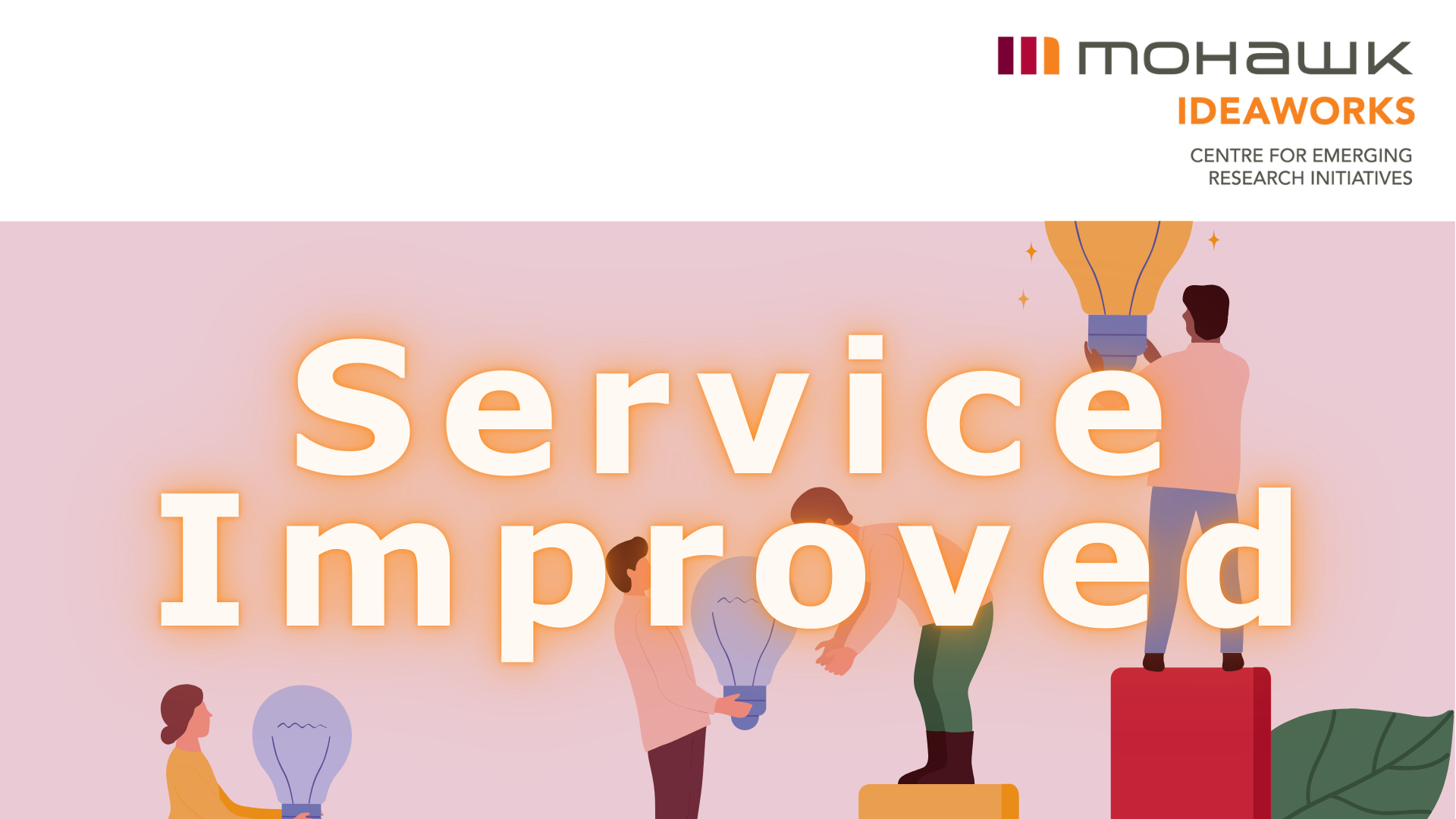The Challenge
It is a widely held view that Canada has a skills gap. Over at least the past 20 years, study after study has concluded that Canadian companies perennially struggle to find employees with the right skills. And the price is said to be high. In Ontario alone, one estimate put the cost of the skills deficit to the economy at nearly $25 billion a year – and that was in 2013 (Stuckey & Munro, 2013). The public discourse about the skills gap poses a huge challenge to postsecondary institutions, especially colleges, whose mission in large part is to prepare employment-ready graduates. In response, Canadian colleges have been working diligently with employers, policymakers and faculty to better meet the demands of the labour market. Yet despite years of effort, research and calls-to-action, solutions still seem elusive, even as the concern intensifies. New CSSIC research however, through the Future Ready Skills Translator at Mohawk College, is helping ensure employers get the skills they need.
The Solution
Recently, the team at the College Student Success Innovation Centre at Mohawk College (CSSIC) began looking for answers to that question, with an innovative framework for understanding – and bridging – the presumed skills gap called the Future Ready Skills Translator, or FRST for short. Launched last year with the support of the Social Sciences and Humanities Research Council on behalf of the Natural Sciences and Engineering Research Council of Canada’s College and Community Innovation Program, the project explores a unique insight, explains Tim Fricker, Dean of Students at Mohawk and head of CSSIC. “Every college wants to figure out how to get students into jobs, and every employer wants to figure out how to hire the right person, but the two sides are coming at the problem from different angles,” he says. “It’s not just a skills gap – it’s a skills articulation gap.”
The FRST project aims to bridge that gap by developing and testing a way to more accurately translate employer job performance expectations into terms colleges and students can apply to skills development. Like so much of CSSIC’s work, the FRST project is a collaborative effort, harnessing the input and participation of its researchers, employer partners, Mohawk faculty and students. The research also adheres to CSSIC’s evidence-based approach, developing real-world scenarios that conform to real world on-the-job performance expectations. Like other CSSIC research, such as its proactive advising and psychologically attuned communication initiatives, FRST focuses on micro-barriers to successful student outcomes. And it is already yielding results – some of them surprising both to educators and to employers.
The Impact
For Dr. Pamela Ingleton, the core problem underlying much of the debate about the skills gap is that it is imprecise. “For me personally, the discussion feels very generic,” says Ingleton, a professor and Learning Outcomes Assessment Consultant at CSSIC and FRST’s Project Director. “If there’s an issue, we need to understand it in detail.” Developing that detailed understanding is the project’s first step. CSSIC surveyed three of Mohawk College’s Future-Ready Premium Employers – nine local organizations with which the college works closely to better understand their needs and give students opportunities when they graduate. The surveys comprised a series of probing questions about the demonstrable abilities employers are looking for in candidates for specific positions, especially those they have had a hard time filling. The surveys are not a checklist, Ingleton explains, but rather a detailed series of skills-component statements that “defamiliarizes the experience” of talking about skills. “These skills are complex,” she says. “For instance, we think of ‘critical thinking’ as a single thing, but in reality it is a process that requires a range of different abilities. With these surveys, we can get really granular.”
From the surveys, CSSIC researchers then take all the employers’ component statements, bundle them together and sort them into 16 essential 21st-century skills, as defined by academia’s widely accepted skills-value reference, the Association of American Colleges and Universities’ VALUE Rubrics. The translated skills, built into a profile for the “ideal” job candidate, are then compared to the employers’ job descriptions, to identify discrepancies or gaps in the way employers are talking about requisite skills.
So far, that translation process has produced some remarkable findings. For instance, the aforementioned “critical thinking” is standard in job descriptions. “If we had put that on a checklist, every employer would have checked it,” says Ingleton. Yet in the job profiles CSSIC built around translated skills, critical thinking was given a much lower priority than expected. “In fact, many roles don’t require critical thinking,” she explains. “Problem-solving trended higher, while critical thinking – which involves sitting back and thinking through possibilities – just isn’t required in many entry-level roles.” What did trend higher than expected? Information literacy. “In an employment context, how often will a manager say, ‘I am looking for employees who can find answers themselves’” Ingleton asks. “Information literacy is that self-directed ability to get the information that’s needed,” she adds. “Yet it is not a skill you will find in many job descriptions.”
Findings like that have provided a few “ah-ha” moments for employers, as well. The non-profit Thrive Group, based in Hamilton, operates a network of long-term-care homes and AbleLiving and capability support services in Southern Ontario. As a Mohawk Future Ready Premium Employer for several years, it is participating in FRST, and has worked with CSSIC on translating skills for three jobs – personal support workers (PSW), registered staff (such as registered nurses) and leadership positions. Along with CSSIC, “we have really dug down into those job descriptions, and also about our hiring practices and interviews,” says Lucy Sheehan, Thrive Group’s Executive Director, Community Services.
One of the insights that arose through the CSSIC survey and analysis was that Thrive Group places enormous importance on its culture of excellence in service, and sharing its values was something it really looked for in new hires. Yet when CSSIC compared that finding with what Thrive Group was saying to job candidates, “there was a bit of a disconnect,” Sheehan says. “We didn’t put enough emphasis on that culture piece into the questions we were asking in interviews and what we put on job descriptions.”
What's Next
The promise of the Future Ready Skills Translator goes beyond helping employers talk about skills more effectively, however; its goal is to also improve the way educators prepare students for the workplace. The next phase of the project, to be rolled out through 2021, will involve faculty and students, who will be engaged in the employer survey findings and participate in rethinking the skills that are prioritized in the classroom. Along with Toronto-based private-sector technology partner Ametros Learning, CSSIC is developing a series of simulations, based on IBM Watson’s artificial intelligence platform, that will train students in FRST-generated skills through real-world, real-time on-the-job scenarios. “These skills have to be practised,” Ingleton says. With FRST, “we can identify the things students need to learn and get better at before they enter the workplace.”
Like other CSSIC projects, FRST has the potential for impact far beyond Mohawk. Further down the road, if successful, FRST’s service model and findings could be scaled up to existing skills classifications at the policy level, such as the federal government’s National Occupational Classification and its Skills and Competencies Taxonomy. For now, however, the program offers a case study in CSSIC’s unique evidence- and partner-based approach – and the benefits of that approach. FRST can provide educators with detailed, demand-driven data to help better prepare students for the world of work, while giving employers an opportunity to re-examine roles at their organizations through a sharper, more accountable skills lens. Maybe that won’t solve Canada’s presumed skills gap all by itself. But at the very least, equipping employers and educators to talk about skills in the same language is a good place to start.
More Case Studies
See What Our Passionate Team Of Problem-Solvers Can Do
Discover the magic of IDEAWORKS: developing key insights for our partners and providing solutions that address challenges head on.




